A Mother’s Day Wishlist… of the material kind
Starting very soon (as in any day now)Â I’ll join the league of females with their own special day to be appreciated each year: Â Mothers.
Growing up, we celebrated Mother’s Day (and in August, my mother’s birthday) with a trip to the desert for some exploring of new roads and mountain tops, but with one slight change. Â Mom got to pick where we were going all day long. Â At every fork in the road we yielded to her whims. Â I don’t know if it is how she wanted to be appreciated, but to us kids it seemed like a pretty big deal. Â It seemed like a huge responsibility too… what if she chose wrong? Â What if the adventure of a lifetime lay down the right fork, and she chose left? Â I wondered if she might have appreciated a new sun hat more than the weight of Fate resting on her decisions.
Looking back I realize we never once regretted my mother’s choices–never once did we go home thinking “Man, that’s the last time we let her decide which way to go!” Â And I also recall her enthusiasm about what we saw after each decision (“oooooh, look! Â A Short-eared Owl is hiding in that Juniper!”, Â “My goodness! Â Have you ever seen such a view?” , “Those clouds remind me of a Maxwell Parish painting!”). Â Adventure is in the eye of the beholder, and mom showed us how to recognize it, no matter which path you took. (more…)
10 outdoor activities to give a try this week
Starting today we here at Outsidemom have joined

Frankly, we’re thrilled, and have already begun the initiation (i.e. Lindsey is on a field trip all day, and I’m headed outside for spring cleaning just as soon as I hit the Publish button!). (more…)
Napping your kids outside. Everyday.
Have you heard of this?
When I say napping outside, I’m not talking about letting your child finish thier nap in the stroller after a walk or  letting them fall asleep in a pack while you hike – although those are both great ideas. I’m talking about people who put their children outdoors to take nap every single day, no matter what the weather. No matter where they are, which is often right outside their own home.
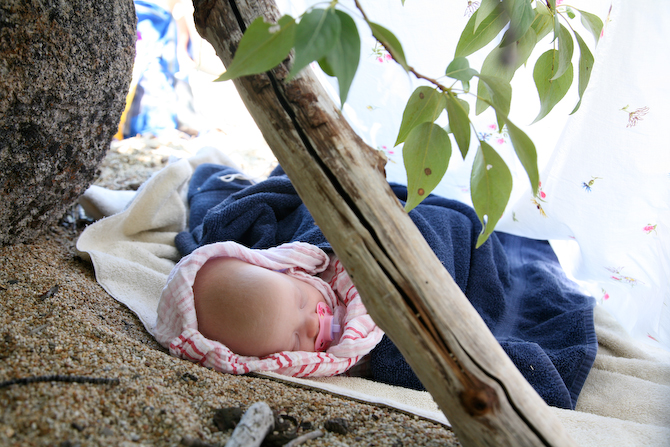
I first read about this idea on DesignMom, in a post about a trip she’d taken to Sweden. She described the country as “one big Waldorf school” where kids spend a lot of time outdoors. They play outdoors, spend school time outdoors, and yes, their kids take naps outdoors. It’s sounds like the OutsideMom’s version of a utopian society to me. (more…)
Danielle: Stand Up Paddleboarding with kids.
I recently moved down the street from a lake. A bonafide honset-to-goodness lake. I’ve been toying with the idea of getting into stand up paddleboarding (SUP). Preferable with my kids. So I knew just just the person to go to for advise. Danielle and her husband own Sweetwater Paddle Sports in Southwest Florida and run a SupMommys group, a class where Moms AND their kids come to learn the ways of the paddleboard.
Thanks for sharing your wisdom Danielle. Can’t wait to try this out.
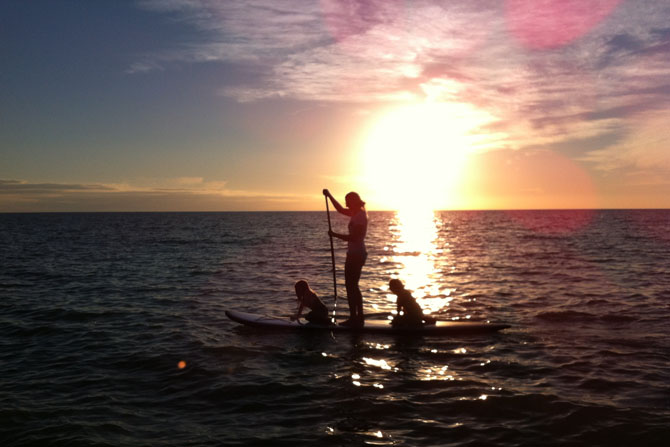
How did you get into Stand Up Paddleboarding? Â
I grew up in Naples, Fl (on the beach), then lived in the Virgin Islands with my husband for a few years. Being on the water has always been a part of who I am.
Three years ago my husband and I got the urge to try stand up paddleboarding since surfing is rare on the southwest coast of Fl. After a few times out on a board my husband and I decided we wanted to open our own stand up paddleboard shop, Sweetwater Paddle Sports. We’ve been open for 2 years, have been crazy busy and are now expanding!
What made you decide to start your SupMommys group? (more…)
The Kids’ Outdoor Adventure Book (and a giveaway!)
 So Stacy Tornio sent a copy of her (and Ken Keffer’s) new book to me a few weeks ago. Â I’ve been reading through it ever since. Â So many ideas (448 to be exact)! Â So well organized! Â She’s giving away autographed copies of this book, as well as kids CLIF bars (Zbars) through the end of April. Â Having read through much of this book, I highly recommend you sign yourself up for the giveaway.
So Stacy Tornio sent a copy of her (and Ken Keffer’s) new book to me a few weeks ago. Â I’ve been reading through it ever since. Â So many ideas (448 to be exact)! Â So well organized! Â She’s giving away autographed copies of this book, as well as kids CLIF bars (Zbars) through the end of April. Â Having read through much of this book, I highly recommend you sign yourself up for the giveaway.
Why?
Let me tell you.
These guys get it.  Their book tallies up the essence of outdoor parenting blogs everywhere.  This is from the introduction: “Nature is a destination, but you don’t have to travel anywhere to find it.  Just open the door and step outside.  The tiniest of porches can house a flower container.  A backyard can provide a lifetime of natural experiences.  Nature is everywhere….”  This book is perfect for first time moms, as a really awesome baby shower gift, and for those who wish they did more things outside but aren’t sure how to start. (more…)
Find out what wildflowers are blooming in your neck of the woods
It is so close to springtime here. Â The grass is mostly green. Â The Fox Sparrows are back in front of the house. Â Robins are perusing the lawn for tasty grubs. Â The Red-tailed Hawks that live in the Cottonwood just down the road are searching the fields for voles again. Â Mud Season has just about passed and I don’t have to wipe the dogs’ feet every time they come in the house. Â Flowers will be unfurling their splendid banners any day now!

They may already be blooming where you are… and if you aren’t sure, there are a number of excellent websites that can keep you up to date on the blooms occurring in your neck of the woods. Â Here are my favorites, arranged by region (this list is hardly comprehensive, but is a start). (more…)
Seventeen props to consider bringing when camping with kids
We always advocated that being outside is its own reward; that kids can be entertained with a minimum of ‘toys’ while in Nature’s Playground. Â And while we still stand by that, it’s also true that a few simple props can greatly enhance any camping trip–especially ones that last a few days.
Here’s a list of our favorite camping gadgets. Â If your kids are especially short on attentiveness, space these out over a few days for even greater enjoyment.
 Binoculars Whether it’s to view the night sky or the moon, magnify a spider (turn your binoculars upside down), or check out the birds in the trees above camp, binoculars are a great addition to any bag of camping goodies.  With adult supervision, any pair will work or you can buy your kids their own pair fairly inexpensively.  Look for ones with low magnification, wide field of view, not too heavy or consider a pair specific to kids.  I’ve been drooling over these made by Bresser.  They ship from Germany.  For older kids, invest in a pair that is durable and will last awhile (but still not too expensive).  I like these Pentax binoculars.  We wrote a post a few years back on teaching a kid how to use binoculars.
Binoculars Whether it’s to view the night sky or the moon, magnify a spider (turn your binoculars upside down), or check out the birds in the trees above camp, binoculars are a great addition to any bag of camping goodies.  With adult supervision, any pair will work or you can buy your kids their own pair fairly inexpensively.  Look for ones with low magnification, wide field of view, not too heavy or consider a pair specific to kids.  I’ve been drooling over these made by Bresser.  They ship from Germany.  For older kids, invest in a pair that is durable and will last awhile (but still not too expensive).  I like these Pentax binoculars.  We wrote a post a few years back on teaching a kid how to use binoculars.- Whittling tools  Hours of fun, and with the added danger of a trip to the emergency room!  Just kidding… sort of.  Buy a thumb guard, or put a leather glove on the hand holding the carving wood to reduce the chance of injury.  If you want to splurge, get a beginner’s set of wood-carving tools.  Otherwise set them free with a pocket knife (there are many good pocket knives for young outdoorsmen, but I will forever be partial to Old Timer’s because it was my first).  A good beginner project is a marshmallow roasting stick.  Also fun are flutes.  You can also buy blocks of wood for beginners, or give your novice a bar of ivory soap and see what emerges. (more…)
4 Ways to Make Pizza While Camping
 As I mentioned last week, it sorta felt like we were short on adults for our camping trip last week. I had a feeling this would be the case so I tried to think up really easy meals.
As I mentioned last week, it sorta felt like we were short on adults for our camping trip last week. I had a feeling this would be the case so I tried to think up really easy meals.
As I walked past a boboli crust display in the grocery store I got an idea… Turned out it was actually a pretty good idea. Â Pizza while camping is totally a lazy man sort of meal. Â Also turns out Olivia had a few more lazy-man pizza ideas to add.
All these recipes are similar in that they involve your basic pizza toppings. They differ in that there are 4 different ways you can make the crust depending on how much time you want to put into it.
First some thoughts on a few key toppings. (more…)
Desert camping with an 11-month-old quadruped.
I forgot how hard it is to camp with an semi-mobile infant. They crawl around camp picking up dirt and rocks and sticking it in their mouth. They make attempts to eat rabbit poop and are fascinated by cacti, drop offs and sharp natural objects. I swear Viv’s got to be well on her way to developing a gizzard after last weeks camping trip.
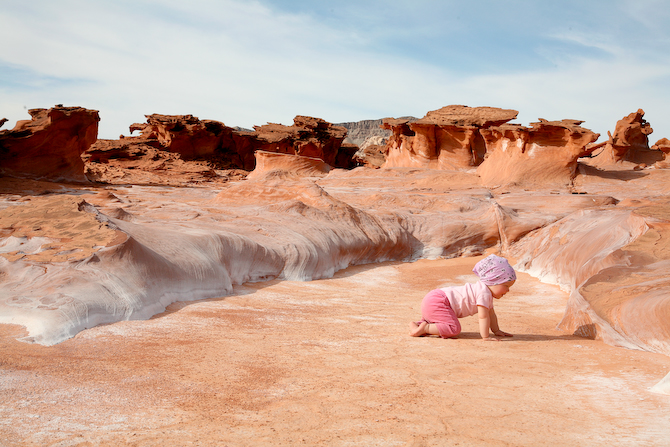
None-the-less we had a great trip last week. We spent  a few days at our vacation home in Southern Utah (aka my parents house) then headed even further south for a little (aka a lot) sun on the Nevada/Arizona boarder. Spring fever is in full swing around here now.
I’ll let the photos do the talking. Happy almost spring everyone.
Losing an adventure buddy. Farewell little Axel Charrette.
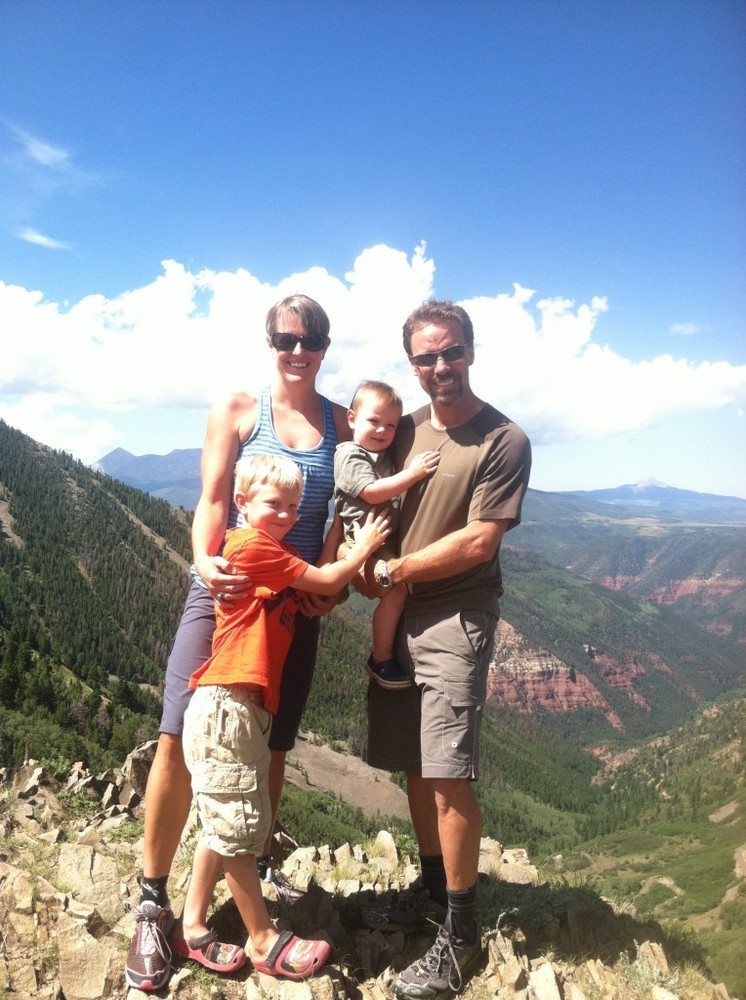 I’ve had writers block before, but nothing like this.
I’ve had writers block before, but nothing like this.
I’ve mentioned Jen on this blog before. I’ve never physically met her, but from the moment I started following her blog I knew she was someone I’d love to be neighbors with. I had to be content to just follow her blog periodically, keep tabs on her families biking adventures, and occasionally shoot her an email when I needed biking advice.
Jen and her family have been living, playing, and working in Mexico for the last few months. They’ve been having fabulous adventures with their kids. Biking, surfing, relaxing and enjoying being together.
All this came to a screeching halt two weeks ago. Her youngest boy is gone. Forever. And I feel like I’ve lost one of my own. The online world is a weird one. Strange how you can let yourself be so vested in the life of someone else. What do you say to a Mom who’s lost their child? I could hardly bring myself to speak the news out loud to my husband.
Jen, Randy, and Kalden, my heart aches for you. It aches for Axel. It aches for the life that won’t be lived. It aches for the horror that exists in our world. I know that the way I feel is 0.000001% of how Axel’s family feels right now, and that makes my heart ache even more. And it is desperately looking for solace somewhere. I find it by hanging onto the conviction that there is more happiness, and peace, and love in this world than hatred and grief. (more…)

















 It is a common misconception that children need to be taught to draw. But really! They don’t need someone to show them how to make a mark. They love to make marks—on walls and floors and brothers and bellies. I can’t remember a time that I didn’t have a pencil in hand, but it wasn’t until I was in my 30’s that I learned how to “draw” in spite of countless hours and a small fortune invested in lessons. Soon after, I started teaching at my daughter’s elementary school as a volunteer. What I discovered is this: Teaching children to draw means first teaching them to see and teaching them to see means giving them permission to ignore the symbolic world of our educational system. There’s nothing wrong with symbols: this post would mean nothing to you if you had not mastered symbology (i.e. letters) in school. But when it comes to drawing, I find that spaces, lines, texture, hue, saturation and color are much more interesting than symbols.
It is a common misconception that children need to be taught to draw. But really! They don’t need someone to show them how to make a mark. They love to make marks—on walls and floors and brothers and bellies. I can’t remember a time that I didn’t have a pencil in hand, but it wasn’t until I was in my 30’s that I learned how to “draw” in spite of countless hours and a small fortune invested in lessons. Soon after, I started teaching at my daughter’s elementary school as a volunteer. What I discovered is this: Teaching children to draw means first teaching them to see and teaching them to see means giving them permission to ignore the symbolic world of our educational system. There’s nothing wrong with symbols: this post would mean nothing to you if you had not mastered symbology (i.e. letters) in school. But when it comes to drawing, I find that spaces, lines, texture, hue, saturation and color are much more interesting than symbols. 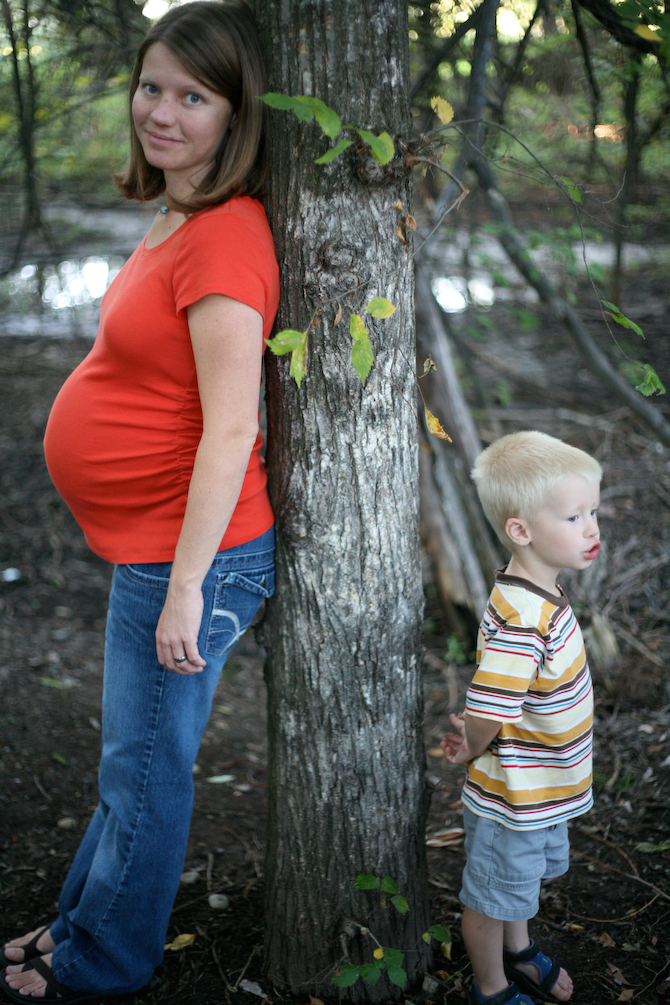
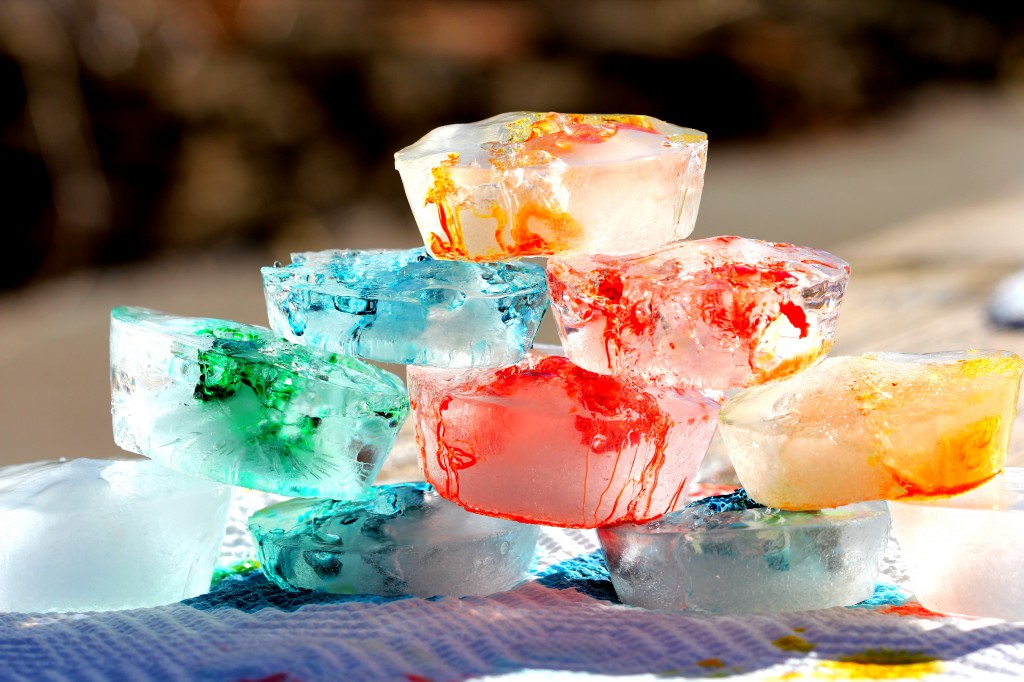
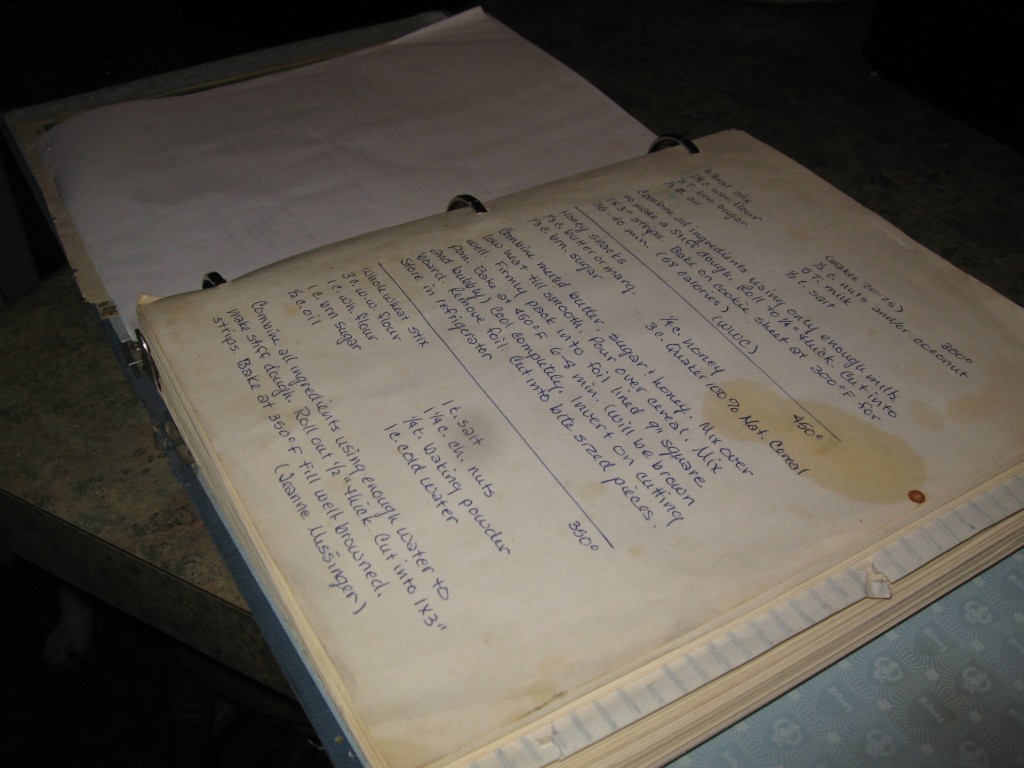
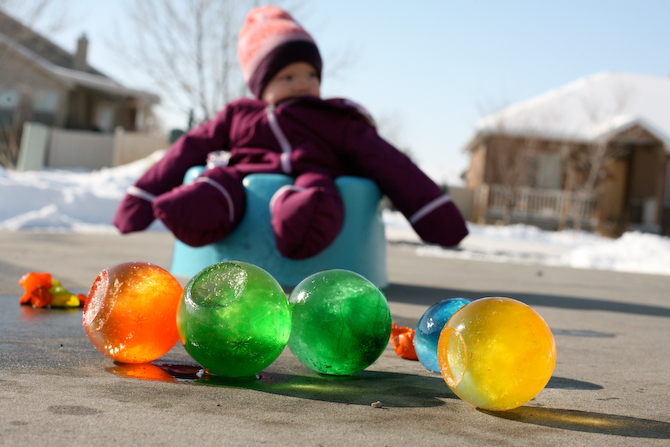
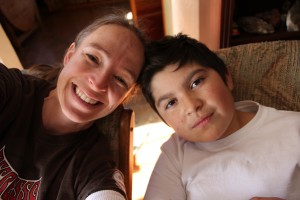
 About a week ago I came down with a terrible case of bronchitis. Every pregnant lady I know tells me that you get sicker when you’re pregnant. I concur. I haven’t been that miserable in a decade, at least. What’s worse is all the cold medicines you’ve been saving since your last bout with a cold are useless. Robitussin? According to the FDA: pregnant women should only take it if the benefits outweigh the risks… and by the way we have no idea what the risks are. Tylenol? Sure. In small doses and do not under any circumstances exceed the maximum dose. Which means if your fever starts coming back around hour 3.5, you are just going to have to suffer until hour six to eight before you can get some relief again. Nyquil? No. Sorry.
About a week ago I came down with a terrible case of bronchitis. Every pregnant lady I know tells me that you get sicker when you’re pregnant. I concur. I haven’t been that miserable in a decade, at least. What’s worse is all the cold medicines you’ve been saving since your last bout with a cold are useless. Robitussin? According to the FDA: pregnant women should only take it if the benefits outweigh the risks… and by the way we have no idea what the risks are. Tylenol? Sure. In small doses and do not under any circumstances exceed the maximum dose. Which means if your fever starts coming back around hour 3.5, you are just going to have to suffer until hour six to eight before you can get some relief again. Nyquil? No. Sorry.
 Back in September
Back in September 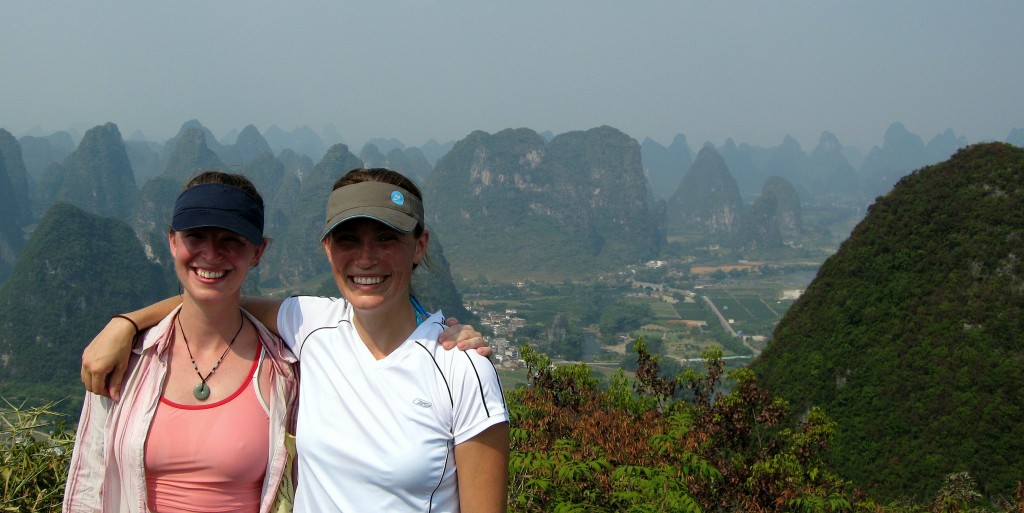



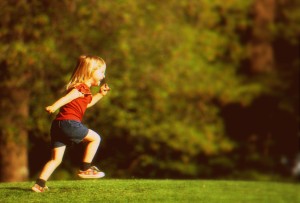
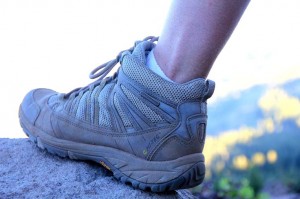

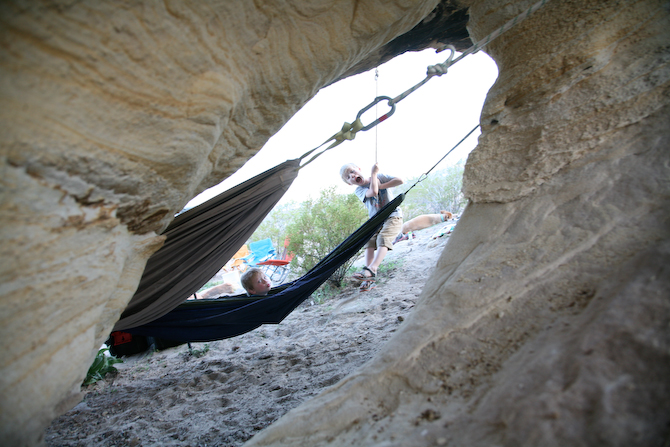
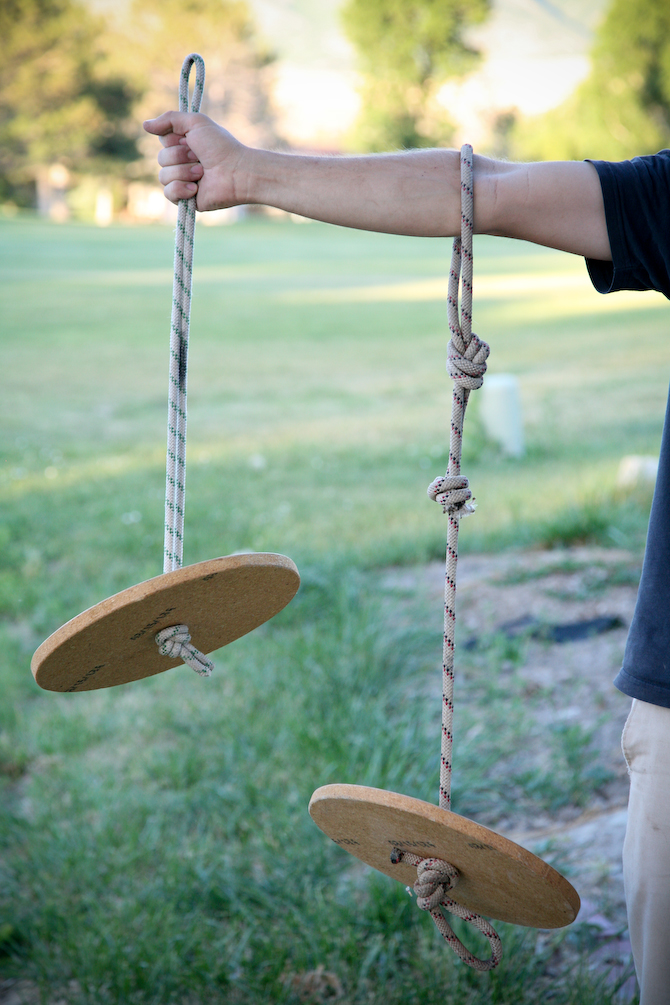
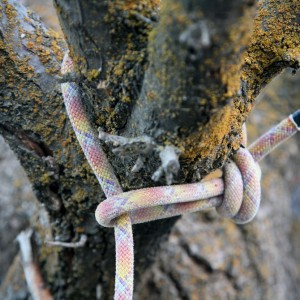 I’ve used several types of rope and most work equally well. Static rope (without stretch) is better than dynamic rope (with stretch). In our yard we often use 1 inch tubular webbing because there is very little stretch and it sits flat against the branch so it rubbs less than most ropes.
I’ve used several types of rope and most work equally well. Static rope (without stretch) is better than dynamic rope (with stretch). In our yard we often use 1 inch tubular webbing because there is very little stretch and it sits flat against the branch so it rubbs less than most ropes.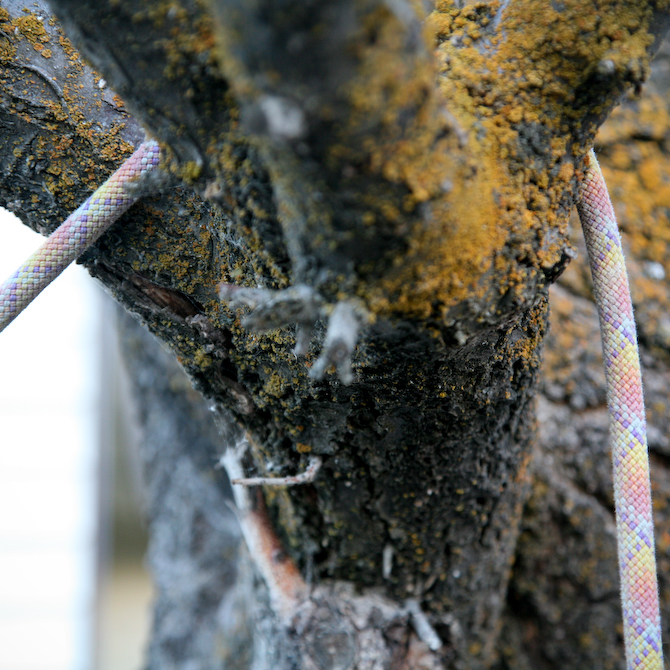
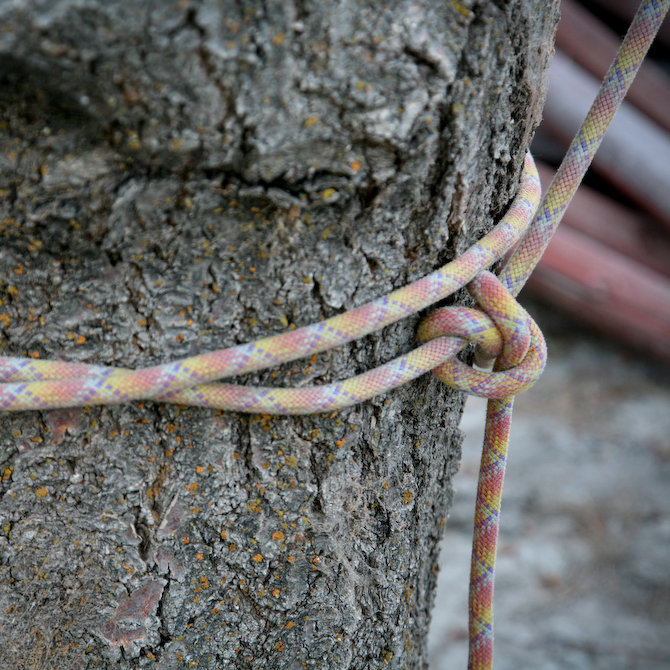
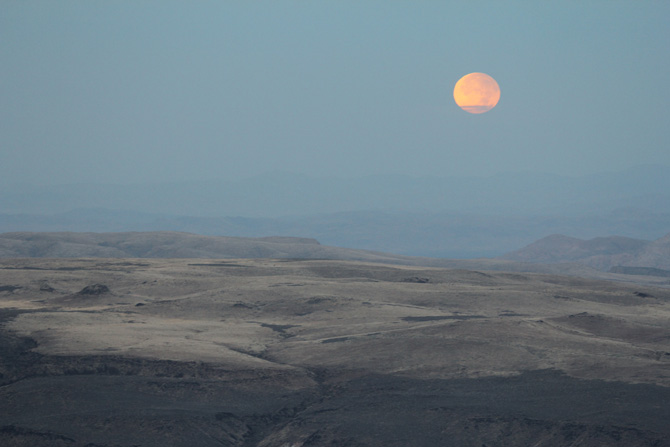
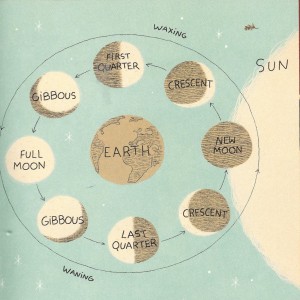
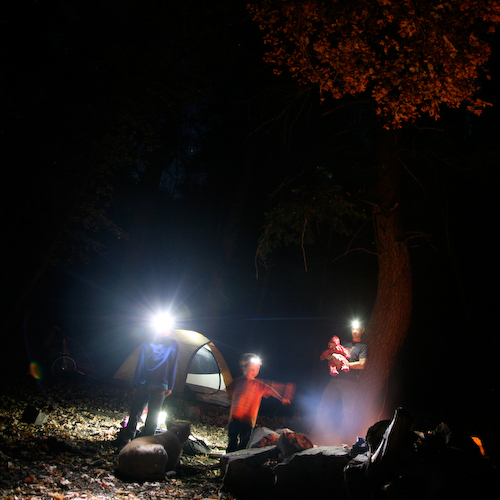 Capture the Flag. The best place I’ve ever played this game was in a sandy wash with sorta steep sides. In this beloved game, each team hides a flag on their side of the wash, or field, or dirt road. Team members strategize to sneak over steal the other team’s flag without getting caught while also guarding their own flag against capture. More info on
Capture the Flag. The best place I’ve ever played this game was in a sandy wash with sorta steep sides. In this beloved game, each team hides a flag on their side of the wash, or field, or dirt road. Team members strategize to sneak over steal the other team’s flag without getting caught while also guarding their own flag against capture. More info on 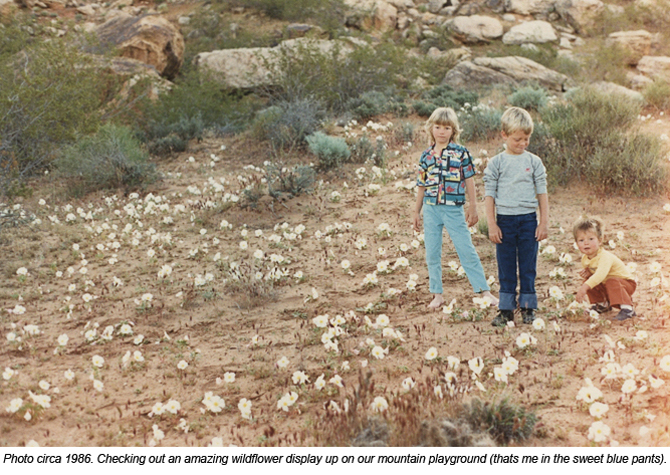
 This post is part of a photo series on beautiful
This post is part of a photo series on beautiful 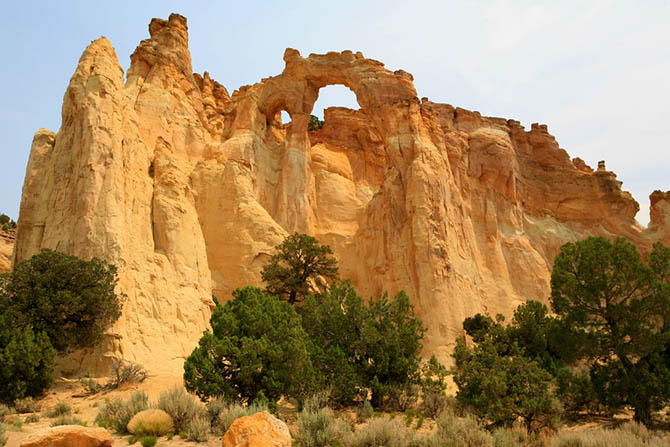
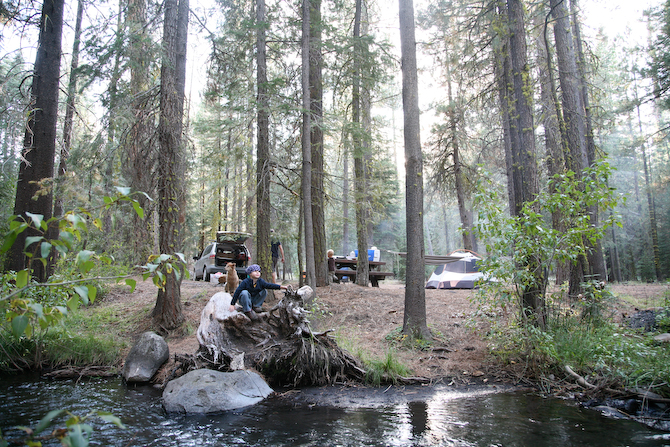
 Since posting my article on
Since posting my article on 
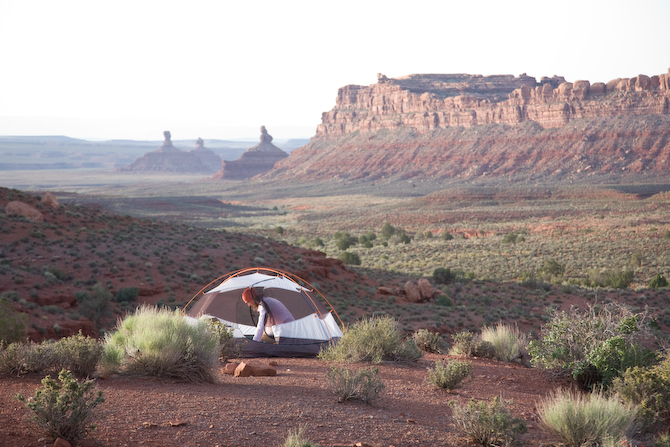
 The folks at Chaco were nice enough to hook up a few of my favorite outdoor kids with a pair of Chacos last spring. After putting their shoes to work all summer these kids are ready to talk about how THEY view their new footwear.
The folks at Chaco were nice enough to hook up a few of my favorite outdoor kids with a pair of Chacos last spring. After putting their shoes to work all summer these kids are ready to talk about how THEY view their new footwear.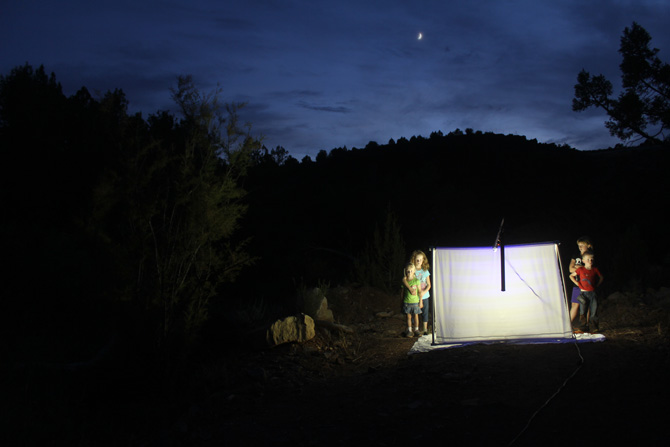

 I know it’s not even close to Christmas (despite what
I know it’s not even close to Christmas (despite what 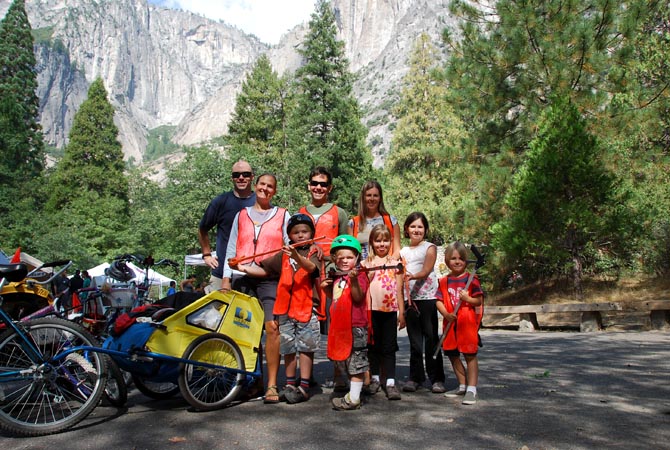
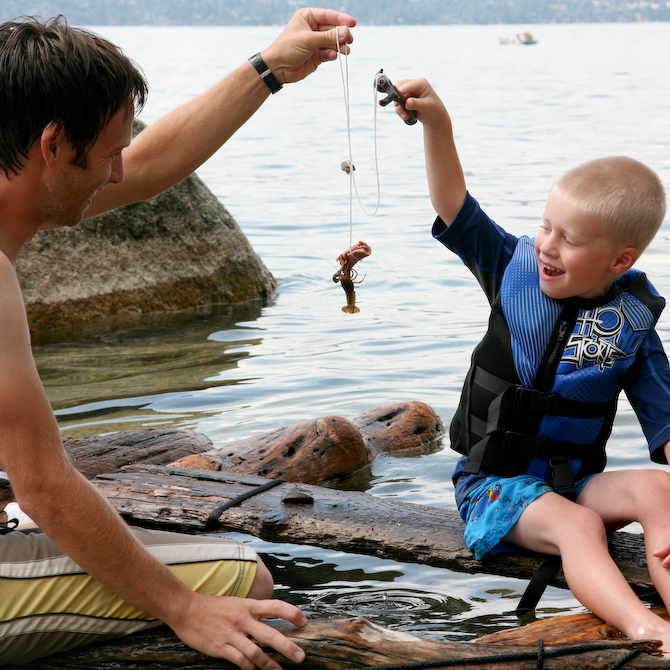
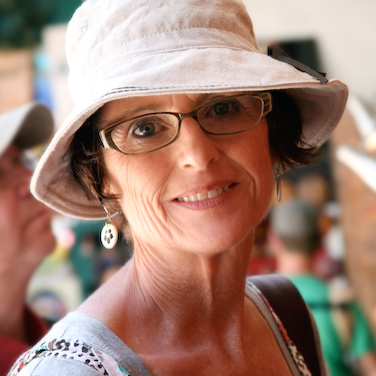 For me (Lindsey), it was suddenly having a daughter. That mother/daughter relationship was brought to the forefront of my mind. The thought of raising a daughter seemed daunting. I started to examine how I turned out so… well, cool (by my own standards of course). The answer: My Mom.
For me (Lindsey), it was suddenly having a daughter. That mother/daughter relationship was brought to the forefront of my mind. The thought of raising a daughter seemed daunting. I started to examine how I turned out so… well, cool (by my own standards of course). The answer: My Mom. For me (Olivia), my mom is constantly in my head. The older I get the less I need to call her and ask for her advise (though I do…) because I can hear what she’d say without her having to say it (some people have bumper stickers on their car that say WWJD; What Would Jesus Do–my bumper sticker should say WWMMD; What Would My Mother Do. And honestly I think Jesus and My Mother would do similar things, though I am unfamiliar with what Jesus took on camping trips).
For me (Olivia), my mom is constantly in my head. The older I get the less I need to call her and ask for her advise (though I do…) because I can hear what she’d say without her having to say it (some people have bumper stickers on their car that say WWJD; What Would Jesus Do–my bumper sticker should say WWMMD; What Would My Mother Do. And honestly I think Jesus and My Mother would do similar things, though I am unfamiliar with what Jesus took on camping trips).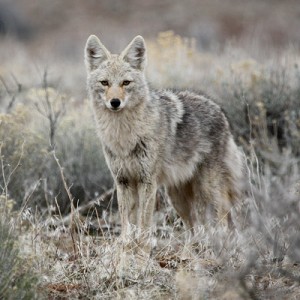 COYOTES AND WOLVES
COYOTES AND WOLVES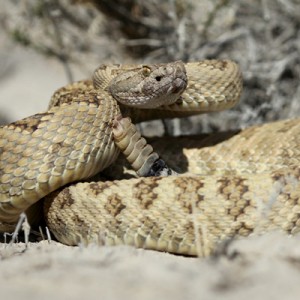 VENOMOUS SNAKES
VENOMOUS SNAKES



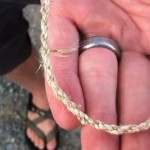
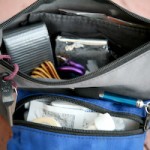
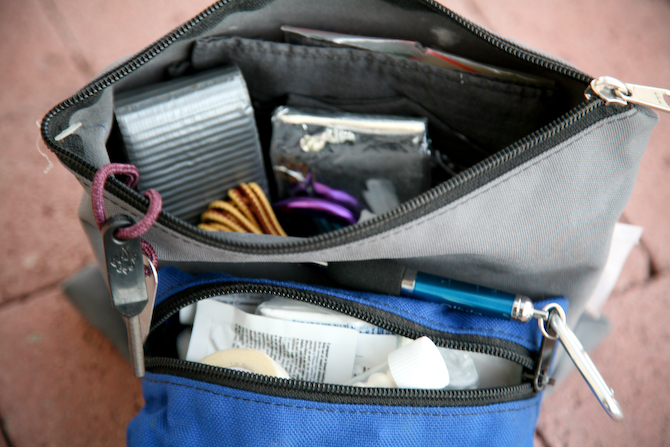



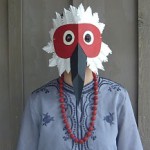
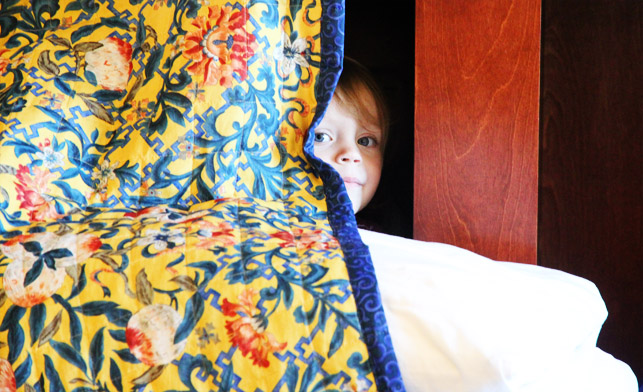

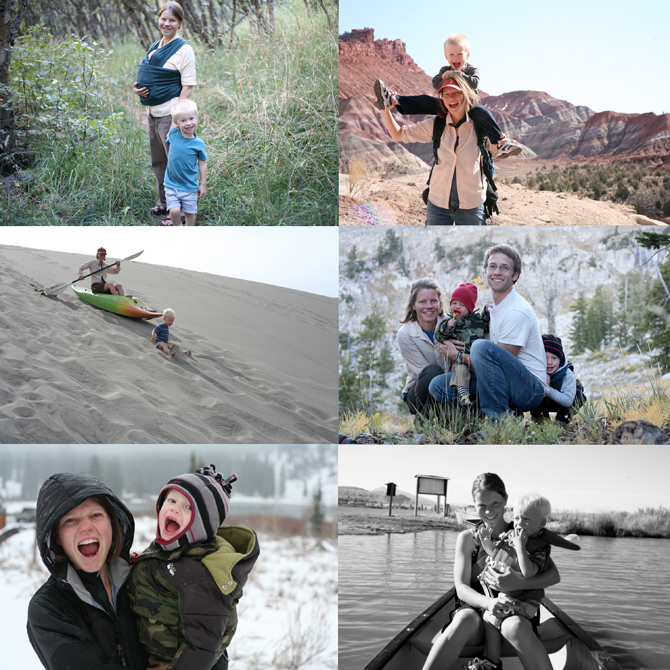
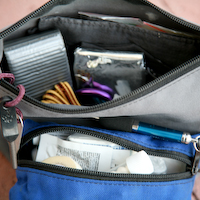
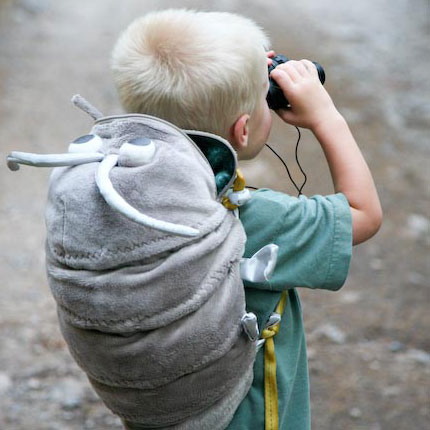
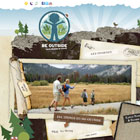
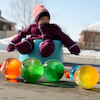
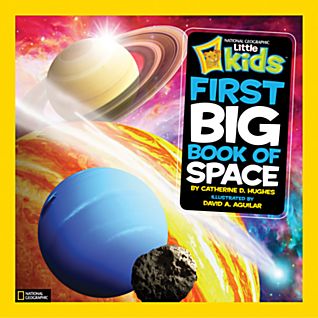

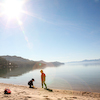






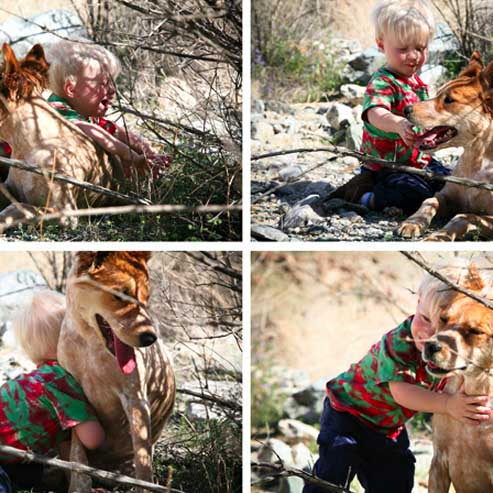
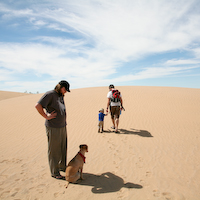
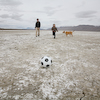
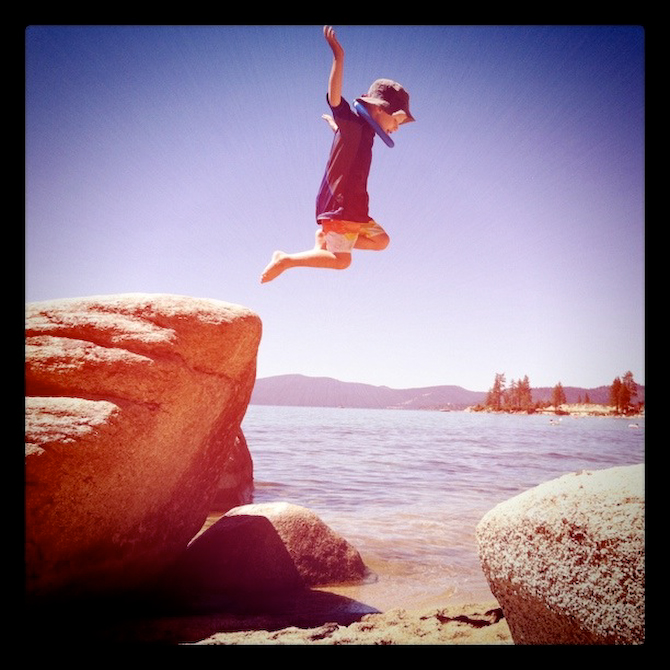








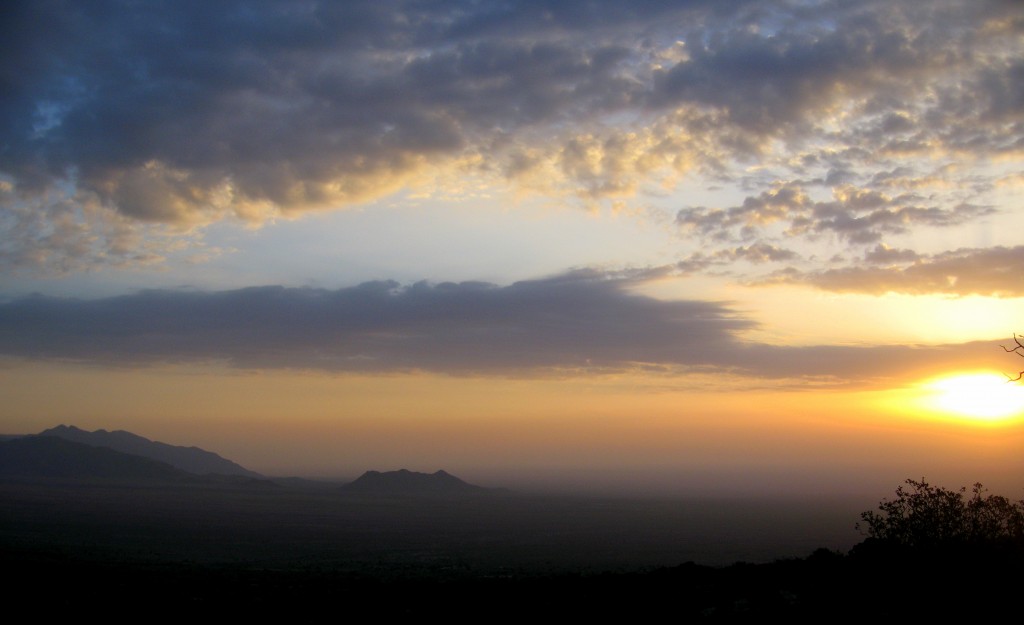

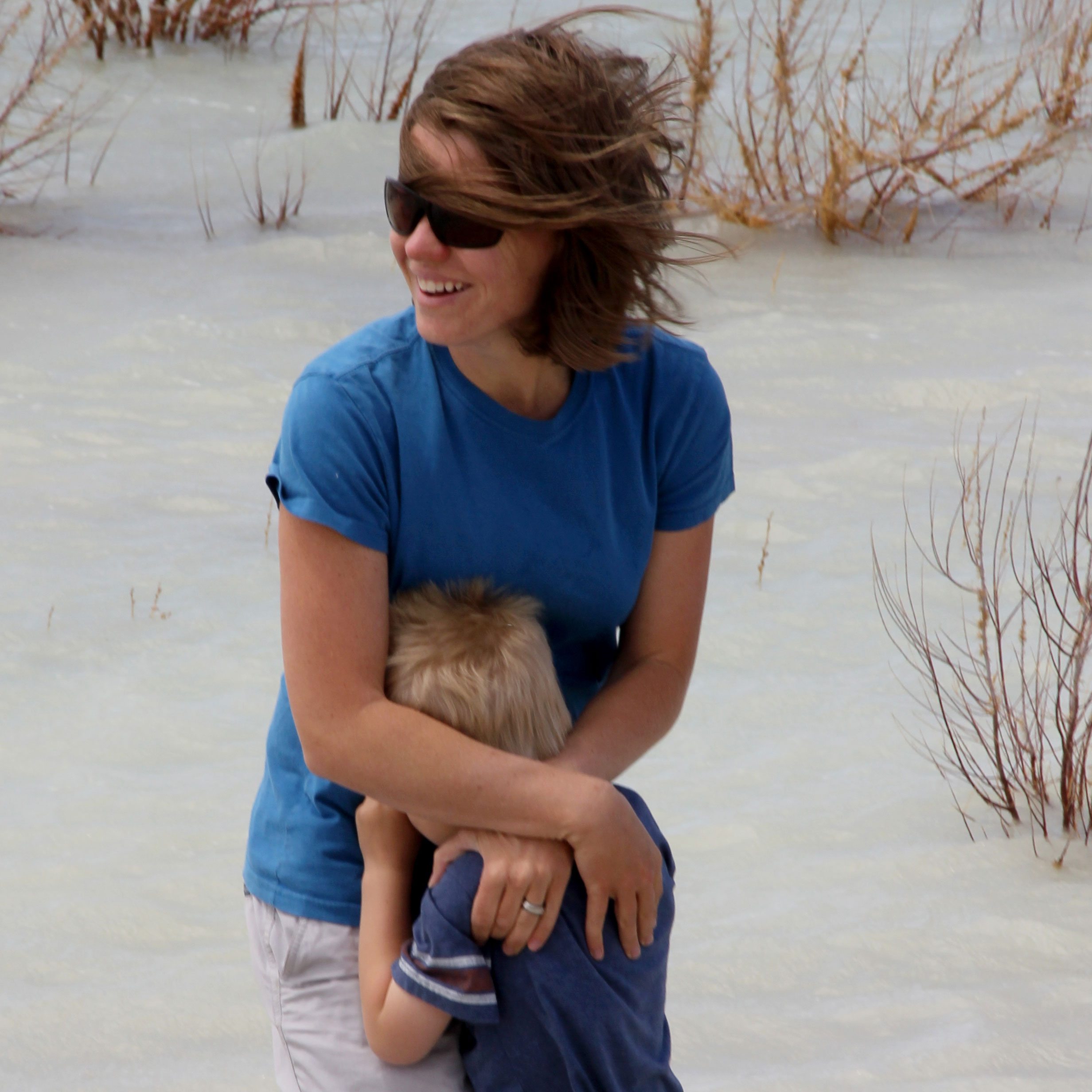

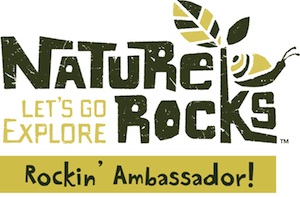
11 Comments so far
Comments Feed
I just came across your site recently, and I love the ideas and advice!
I’d add a couple more things to the list:
A silver emergency blanket (for warmth and visibility)
A plastic garbage bag or two (for waterproofing, groundcover, shelter material, a makeshift poncho, etc.)
Tape/string/twine/lightweight rope for tying things together, marking path, tethering, etc.
Bandana
And remember to dress your child in brightly colored clothing (shirt, hat, etc. for visibility.
I have a large garbage bag in my kids backpacks because it provides extra warmth and can prevent the core from getting wet which can cause hypothermia.
Nice post! Maybe also if they have to venture out in search of water, that they know how to mark their trail to show where they left and which way they went.
[…] Wilderness Survival Skills for Young Children […]
[…] Wilderness Survival Skills for Young Children News 2013-09-13 Emergency Essentials® […]
[…] “OutsideMom.com | Wilderness ‘survival’ skills for young children […]
LOVE the picture. And the information!! Where are you?? Are you super busy? Miss your posts… 🙂 Hope you are well.
picture helped me more than you think
[…] big fat cactus that would SAVE THE DAY.) There’s some great (and simple) tutorials here and here to watch with your kids, then practice on your […]
Great list and some nice additions in the comments. It certainly makes me realize that mine are probably ready for more responsibility.
I’m the author of The Adventures of the Ball Bug Boys. I wrote this fiction chapter book for my grandsons. Although it’s fiction, it helps teach them a few survival tips and morals. Did I say it’s funny too and kids ages 7 – 12 love it!